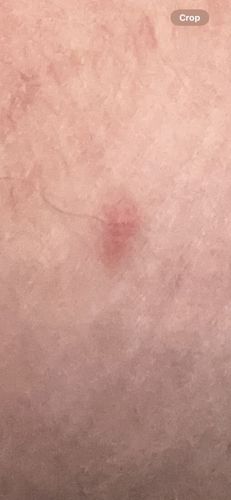Tick bite
Scientific Name: Ixodida (an order including several genera)
Order & Family: Ixodida (Order), Ixodidae or Argasidae (Families)
Size: Unfed ticks typically range from 1 mm to 10 mm, but can swell significantly (up to 15 mm) when engorged with blood.

Natural Habitat
Wooded areas, tall grasses, brush, leaf litter, and urban green spaces. They often wait on vegetation to attach to a host. They can also be found in animal burrows or nests depending on the specific tick species.
Diet & Feeding
All ticks are obligate hematophages, meaning they feed exclusively on the blood of vertebrates (mammals, birds, reptiles, amphibians).
Behavior Patterns
Ticks undergo four life stages: egg, larva, nymph, and adult. Each active stage requires a blood meal to progress. They do not fly or jump; instead, they 'quest' by climbing onto vegetation and waiting for a host to pass by, then latching on. They can remain attached for several hours to days while feeding.
Risks & Benefits
Potential risks: Ticks are significant vectors for a variety of diseases (e.g., Lyme disease, Rocky Mountain spotted fever, anaplasmosis, babesiosis, ehrlichiosis, alpha-gal syndrome) that can be transmitted to humans and animals. Tick bites can also cause localized skin irritation, allergic reactions, or secondary infections. Benefits: Ticks generally offer no direct benefits to humans and are primarily known for their role as disease vectors. In ecosystems, they serve as a food source for some animals (e.g., certain birds, reptiles, and spiders) and can play a minor role in regulating host populations, though their parasitic nature outweighs any perceived benefits for human interaction.
Identified on: 9/4/2025